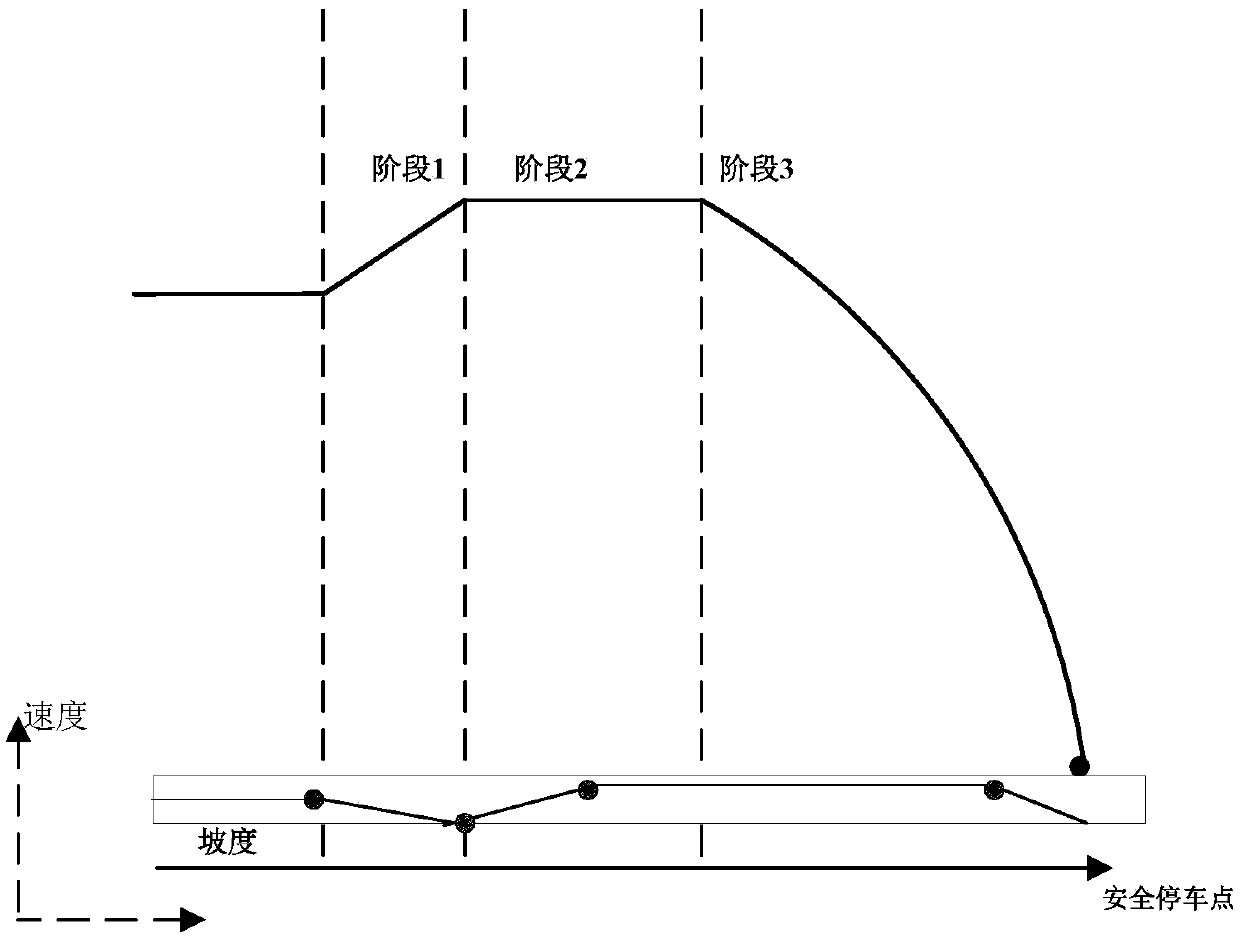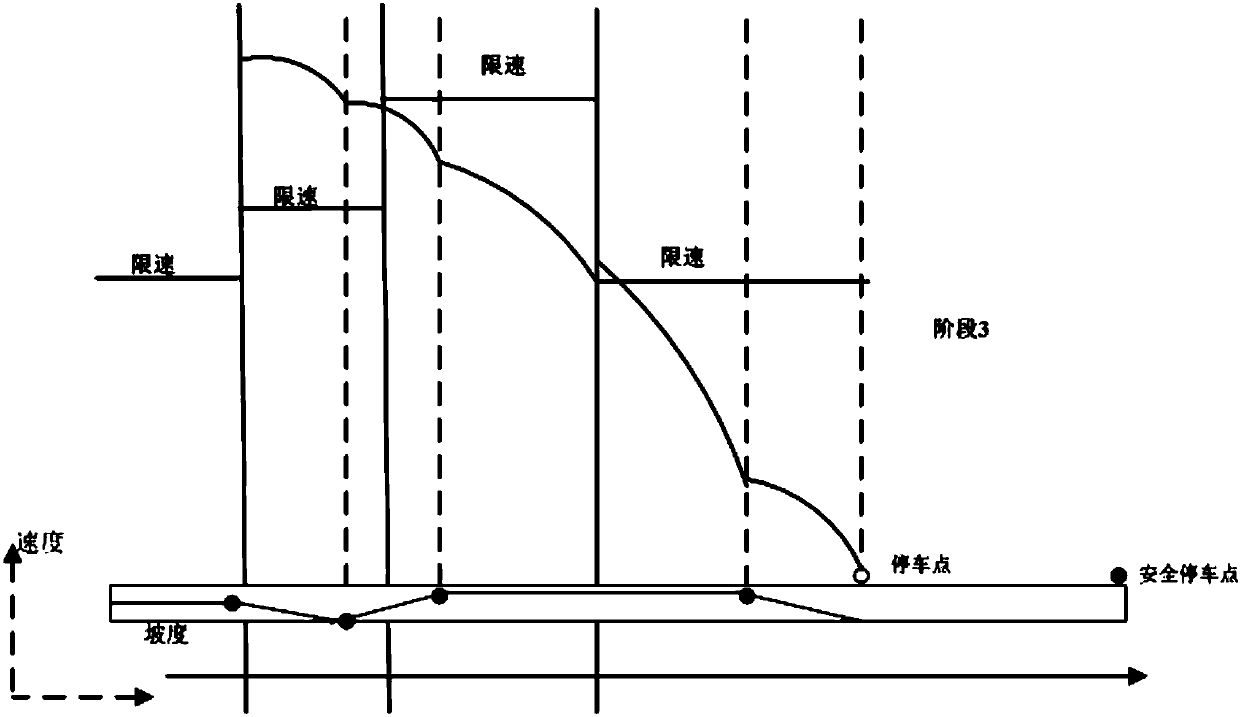Braking method for automatic driving of train
A technology for automatic driving of trains and trains, which is applied in the field of rail transit, and can solve problems such as the inability to align with the platform, the car control algorithm not keeping up with the braking curve, etc.
- Summary
- Abstract
- Description
- Claims
- Application Information
AI Technical Summary
Problems solved by technology
Method used
Image
Examples
Embodiment Construction
[0066] In the departure mode, the train starts to start, and enters the cruise mode when the train is greater than 300mm / s.
[0067] Cruise Mode: Apply traction to quickly reach the autopilot speed limit.
[0068] Braking mode: The train first cuts off traction, then gradually applies acceleration to normal braking, and then follows the braking curve all the time.
[0069] Parking mode: The target speed is 0 and the acceleration gradually decreases to 0.
[0070] The train automatic driving braking method provided by the present invention includes:
[0071] Calculating the shortest distance S2 that the automatic driving brake of the train can conform to the FSB braking curve, S2 is the distance of the last brake release, the delay distance of brake release, the distance of brake application, the coasting distance, the traction removal distance, the traction removal delay distance and sum of tow distances;
[0072] 1. Ease the braking distance:
[0073] 2. Braking relief ...
PUM
 Login to View More
Login to View More Abstract
Description
Claims
Application Information
 Login to View More
Login to View More - R&D
- Intellectual Property
- Life Sciences
- Materials
- Tech Scout
- Unparalleled Data Quality
- Higher Quality Content
- 60% Fewer Hallucinations
Browse by: Latest US Patents, China's latest patents, Technical Efficacy Thesaurus, Application Domain, Technology Topic, Popular Technical Reports.
© 2025 PatSnap. All rights reserved.Legal|Privacy policy|Modern Slavery Act Transparency Statement|Sitemap|About US| Contact US: help@patsnap.com



